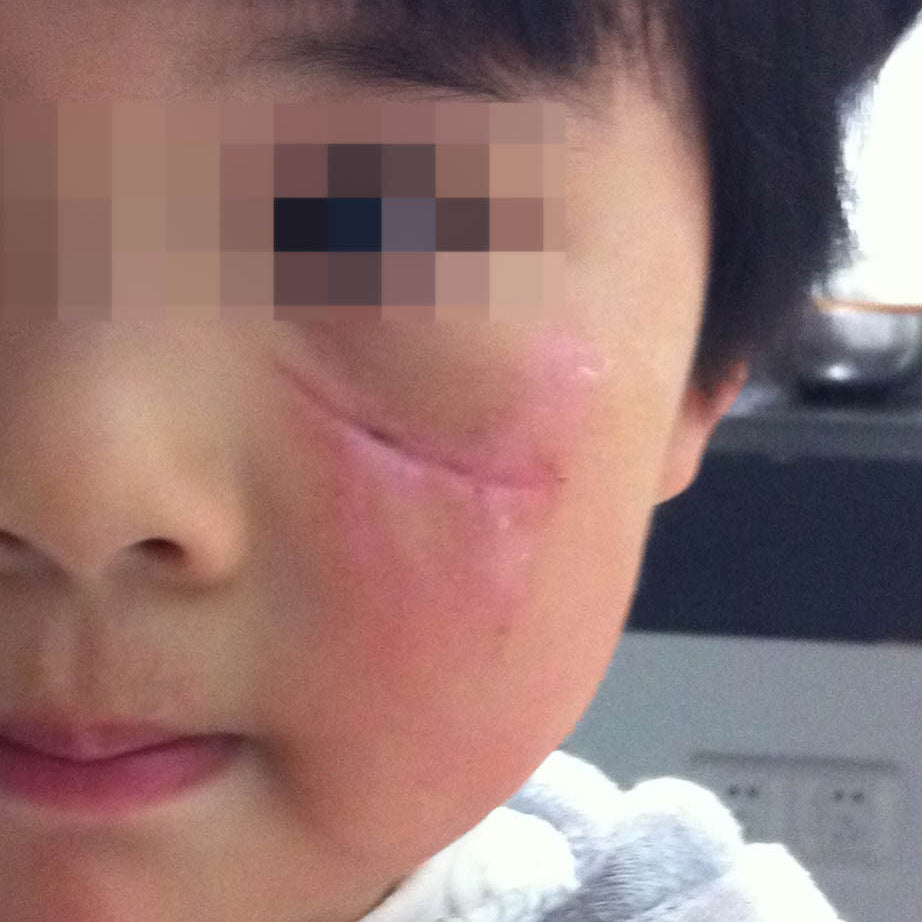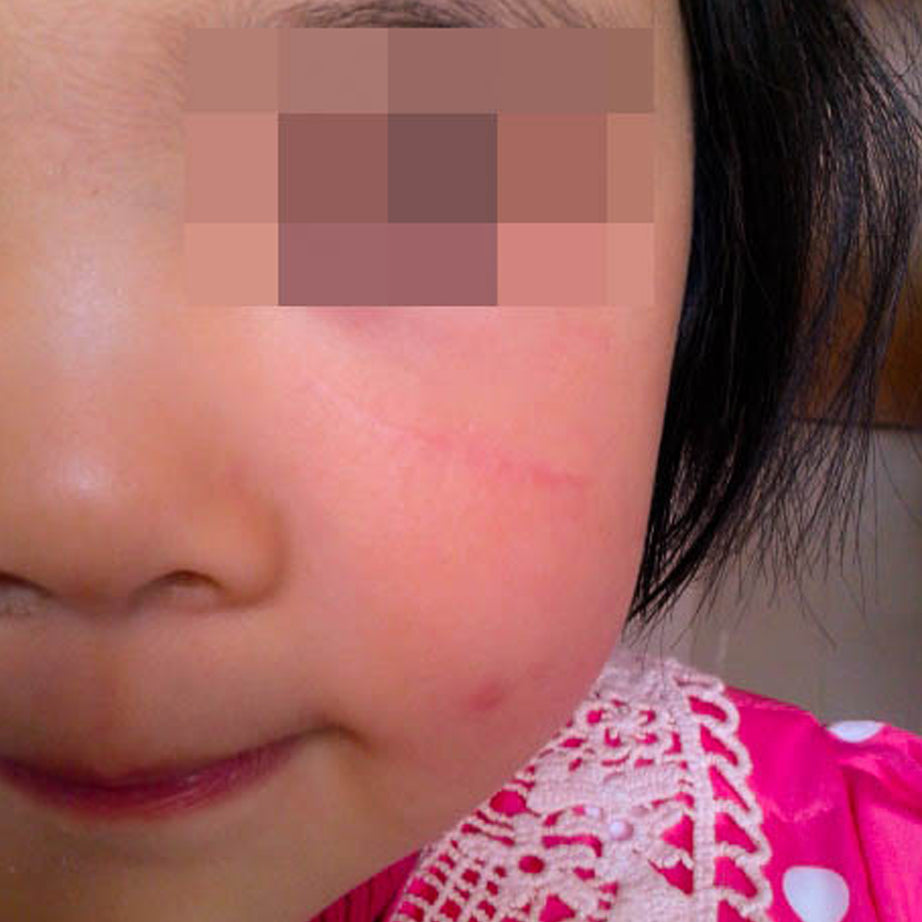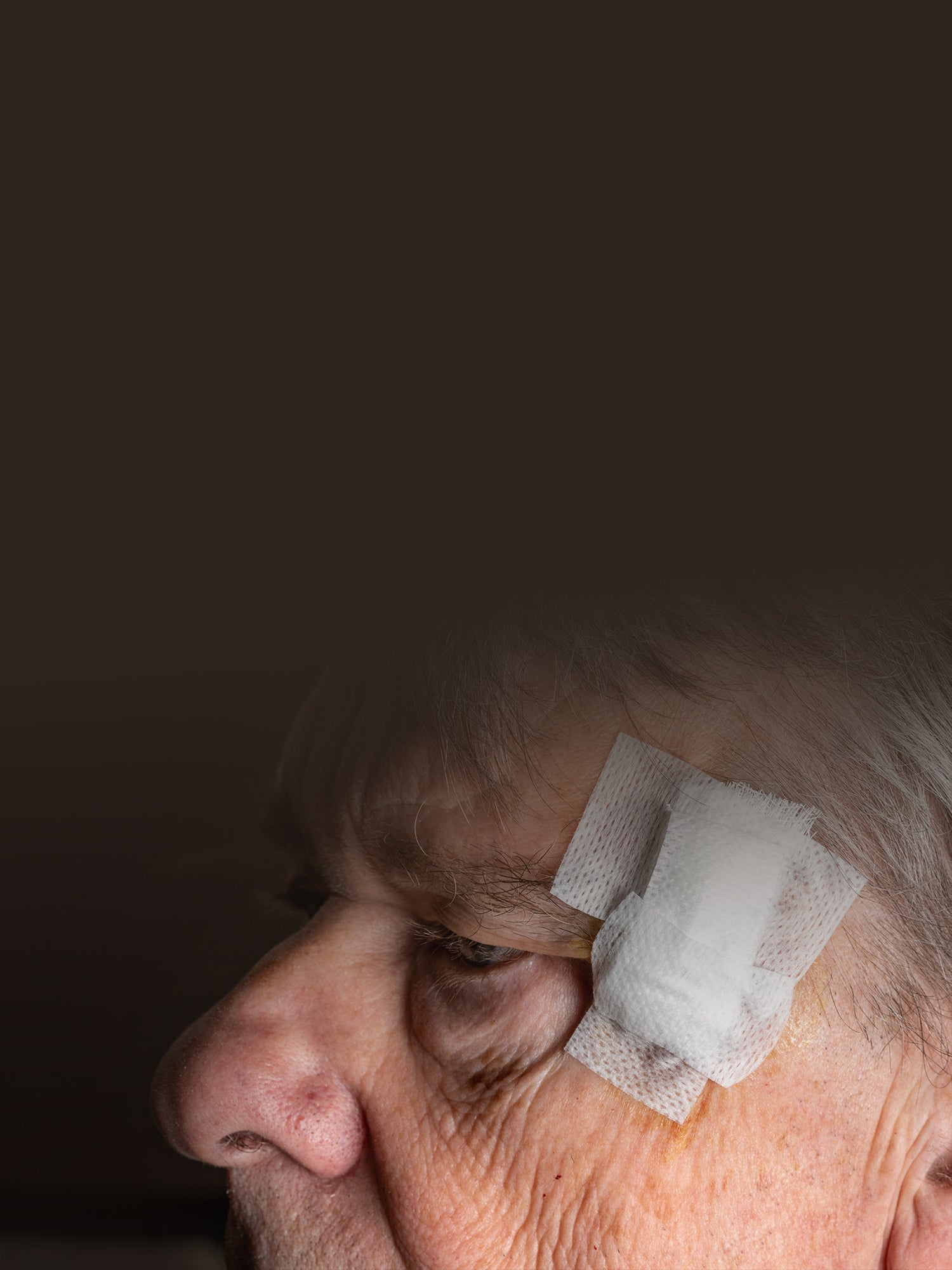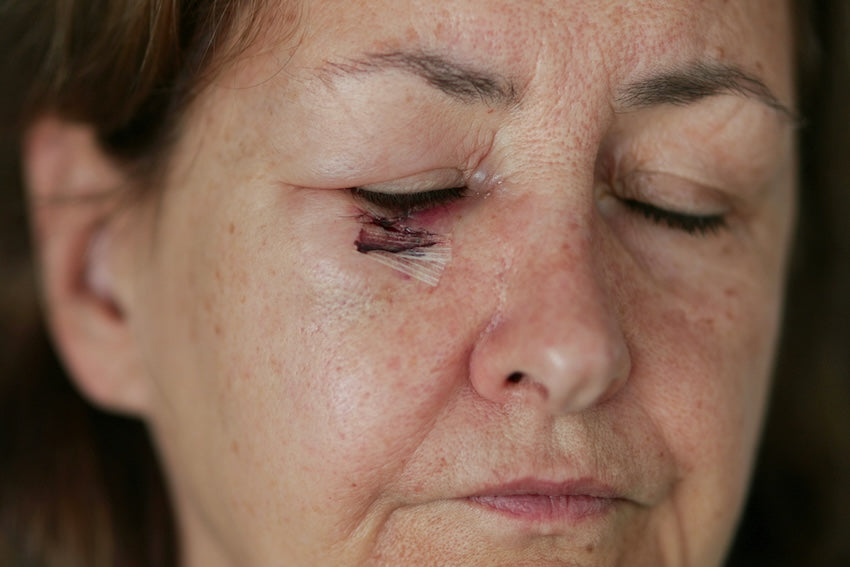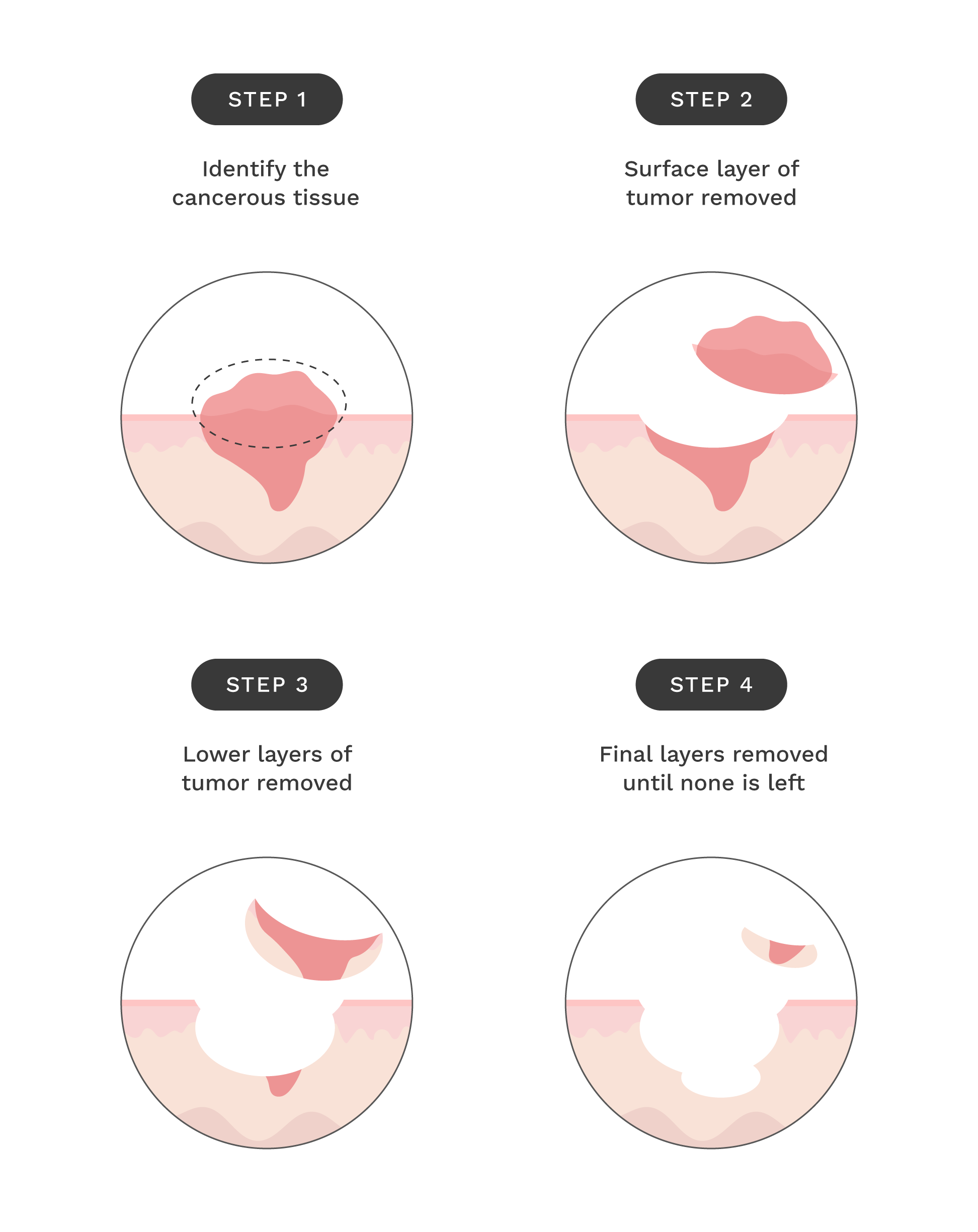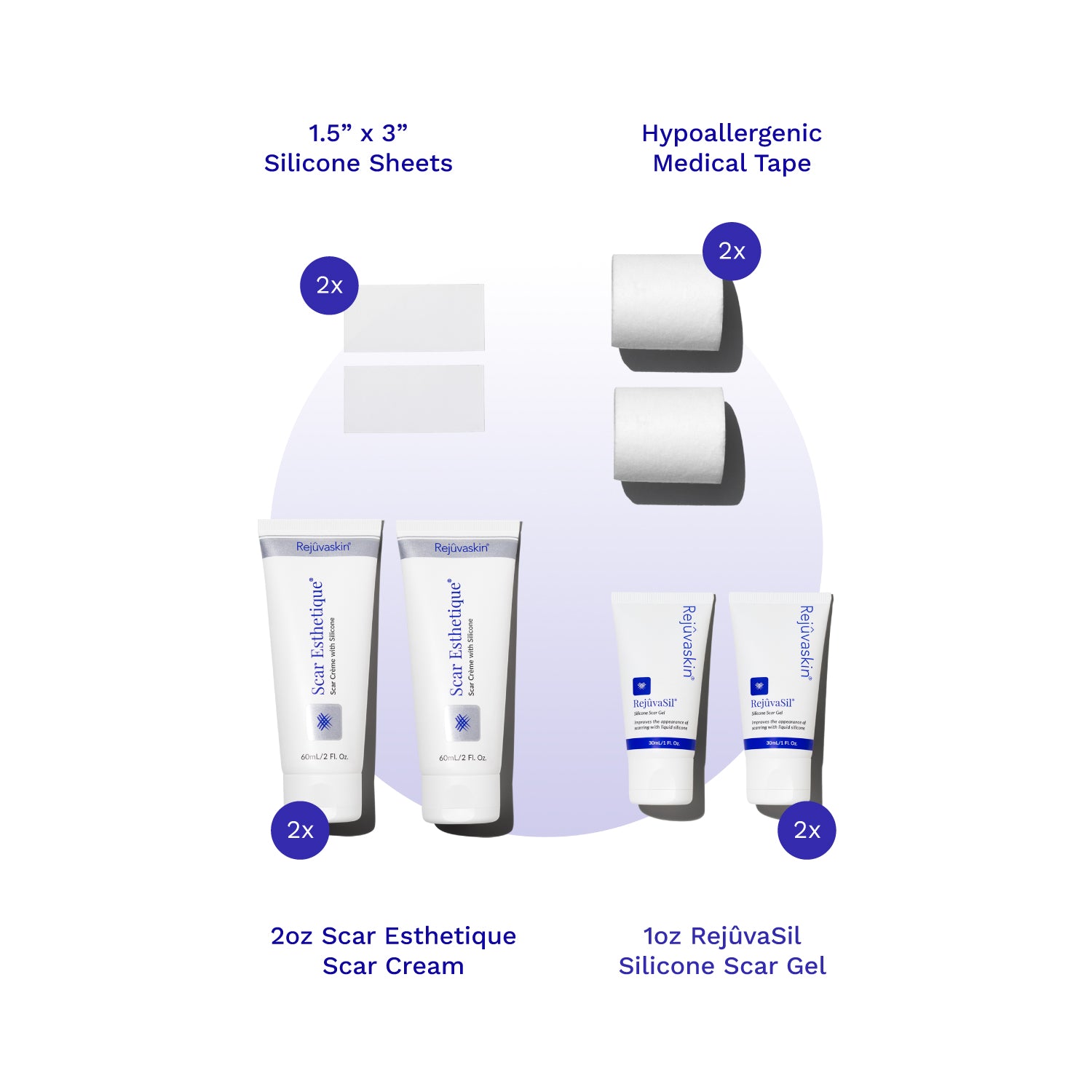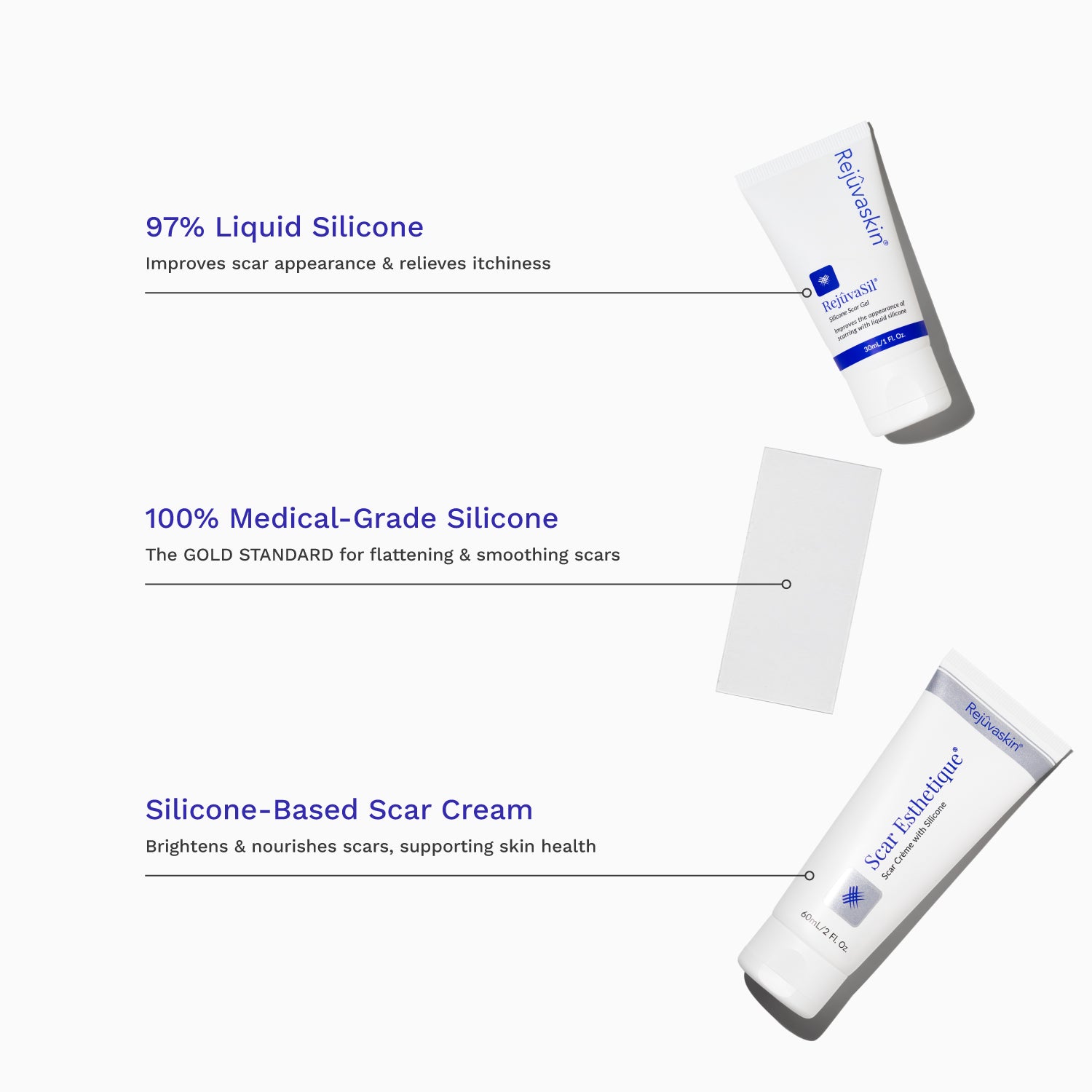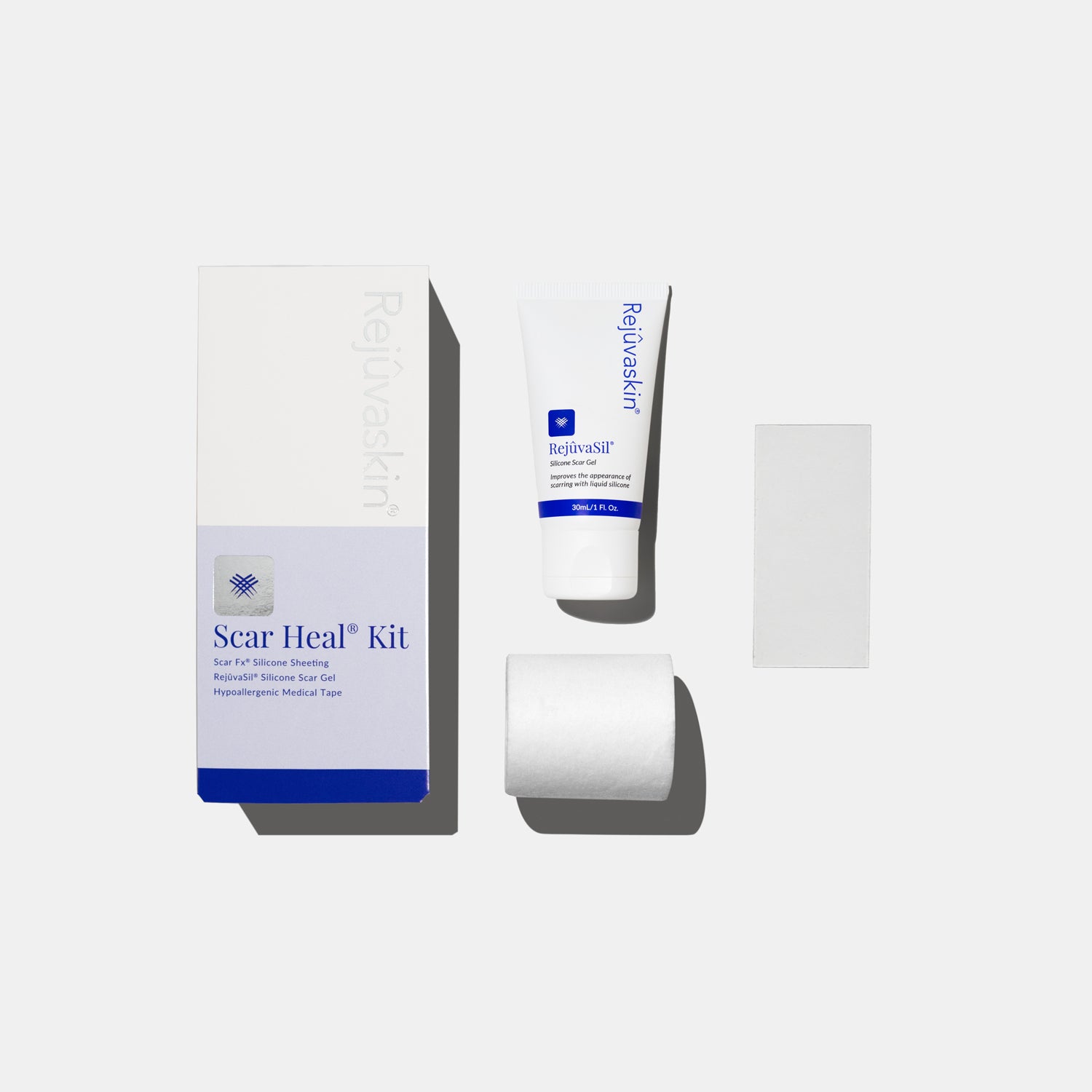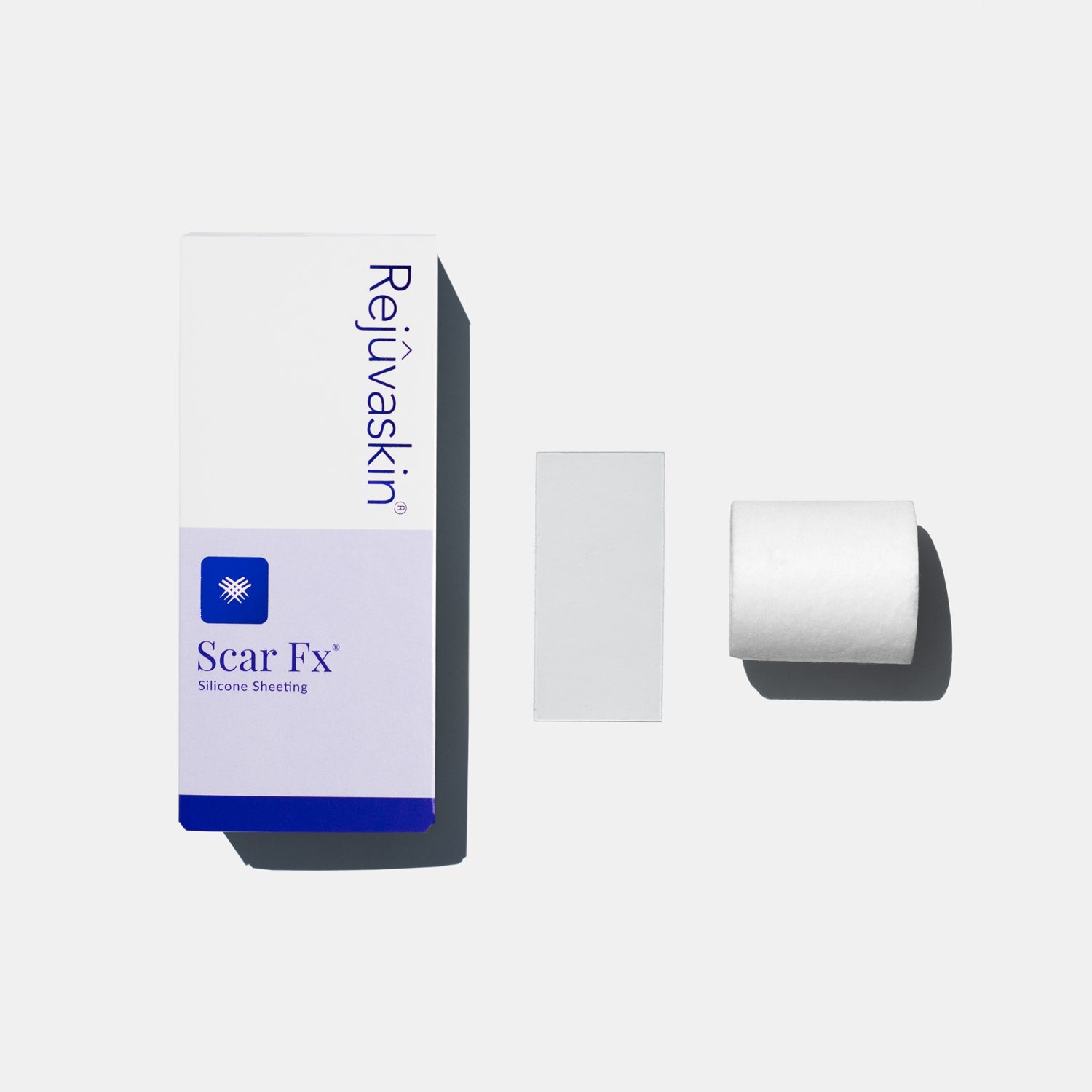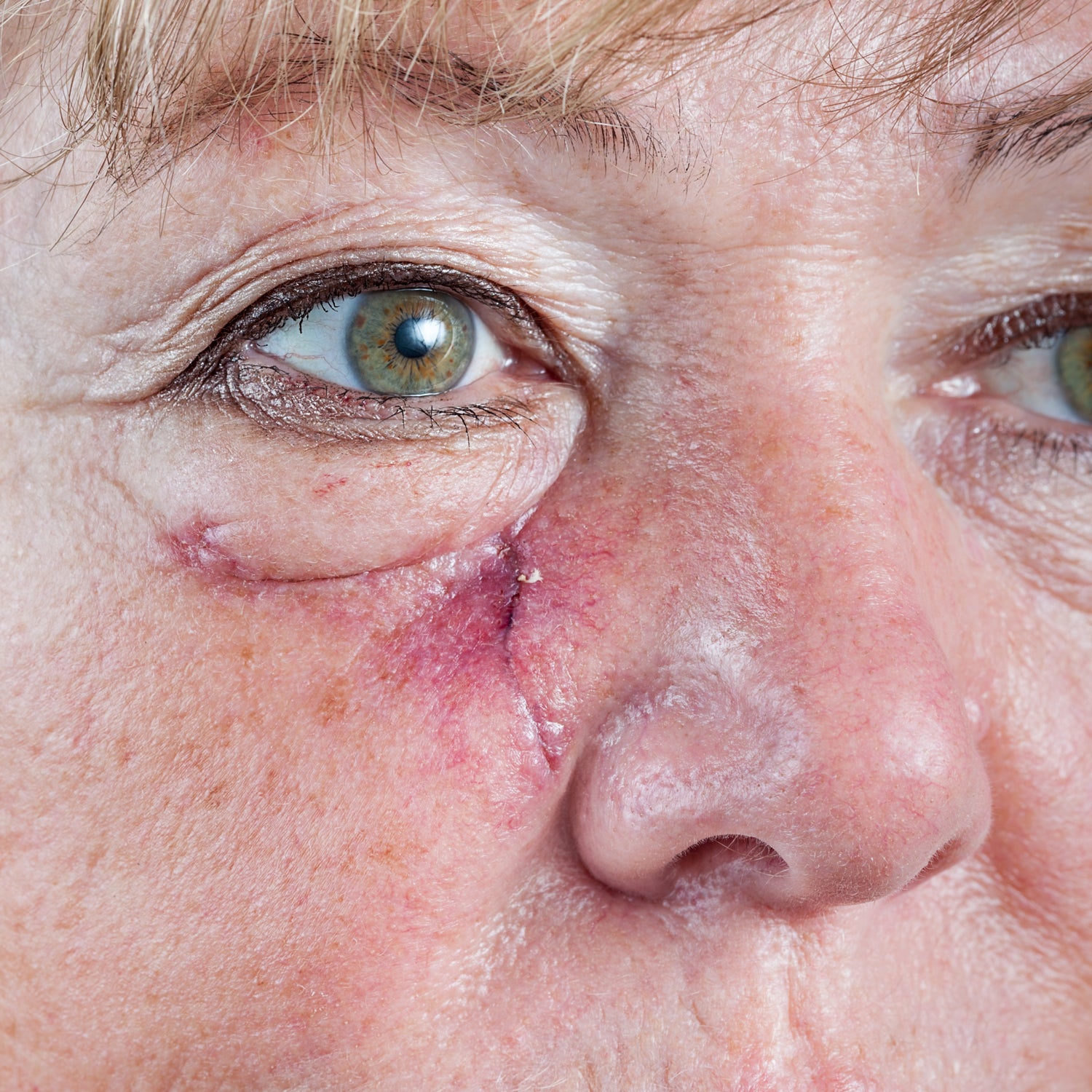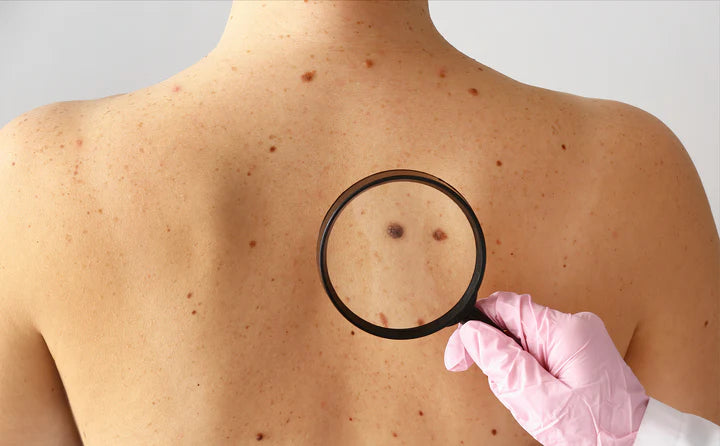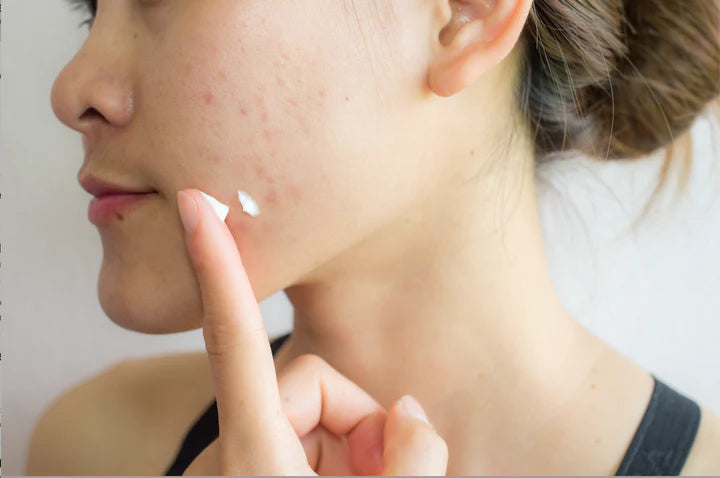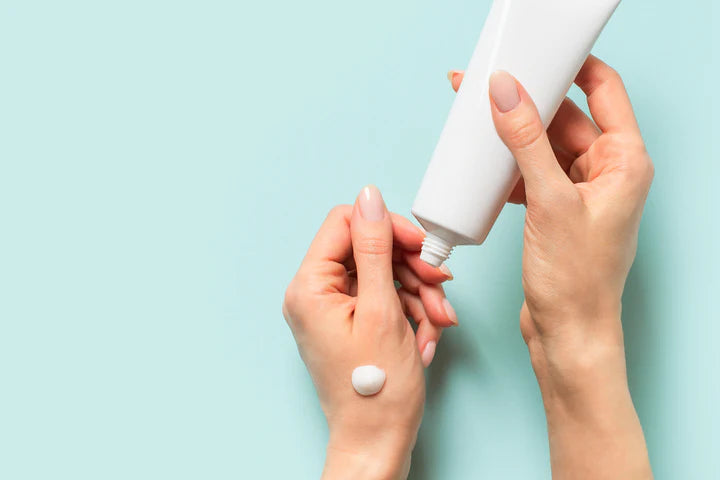How Does It Work?
Pick Your Scar Solution
Complete Post-Op Mohs Scar Treatment
Everything you need for effective scar treatment and prevention in one comprehensive package.
- Medical-grade Silicone
- Complete scar care system
- Suitable for all skin types
- Physician-recommended scar treatment
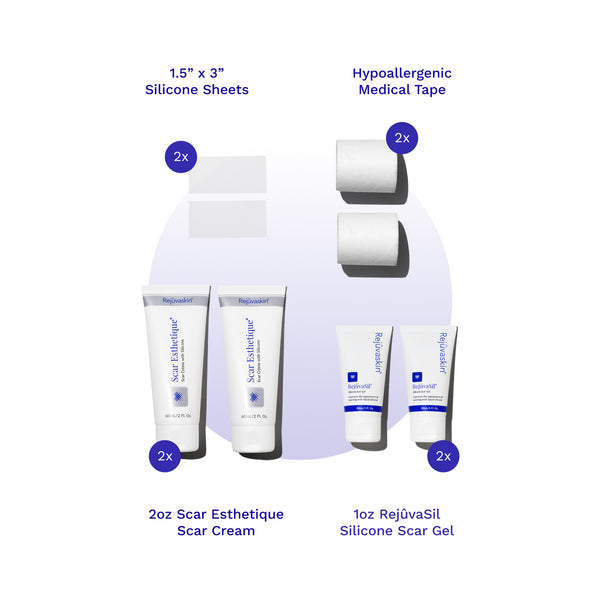
Frequently Asked Questions
What types of skin cancer does Mohs surgery treat?
Mohs surgery is primarily used to treat Basal Cell Carcinoma and Squamous Cell Carcinoma— 2 of the most common types of skin cancer— with a 99% cure rate, and 94% cure rate for recurrent cases (Leslie & Greenway, 1991).
Occasionally, Mohs is also used to treat very early stages of melanoma, or melanoma in cosmetically sensitive areas, allowing for as much (healthy) tissue preservation as possible.
What is the best treatment option for Mohs scars?
One of the best treatment options for Mohs scars is silicone scar gel! This allows the gel to perfectly contour the irregular shape of the scar (as Mohs scars tend to be), and offers a more discreet way to keep your scar protected.
Silicone in general is hailed as the gold standard of scar healing, creating a gentle, occlusive barrier that locks moisture in— in turn preventing excess collagen production that results in noticeable textured scarring.
How does sun exposure affect facial scars?
Sun exposure can darken scars and make them more noticeable. It's important (especially with facial scars, which see a lot of sun) to protect scars from damaging UV rays with sunscreen or protective clothing to prevent hyperpigmentation.
When can I start treating my Mohs scar?
Like with all silicone scar treatments, you want to wait until your wound is fully closed before starting use. This means your wound is no longer oozing, bleeding, scabbing, etc, which usually take a few weeks.
With Mohs surgery, there are several different ways to close the wound, which may affect the length of this healing time. So before starting scar treatment, make sure to consult your doctor!
How much silicone scar gel should I use?
As we always say, a little goes a long way— especially with smaller scars like those that tend to occur on the face (including Mohs scars). Just a small dollop of RejûvaSil Silicone Scar Gel, no bigger than a pea, should be enough to cover your scar in a thin layer of gel. Allow the gel a few minutes to dry, and reapply 2-3 times a day, as needed for consistent coverage.
Can I use silicone gel and silicone sheeting together?
While some Mohs scars or facial scars are in spots or of a certain shape that makes applying sheeting difficult (in which case a consistent regimen of daily scar gel is greatly effective), yes, you can use silicone gel and sheeting together, by alternating each product, day and night.
In fact, we recommend it!
These two products work together to provide around the clock scar management. We recommend using the silicone sheeting at night and the scar gel during the day. Check it out in our Scar Heal Kits.
Before & After
